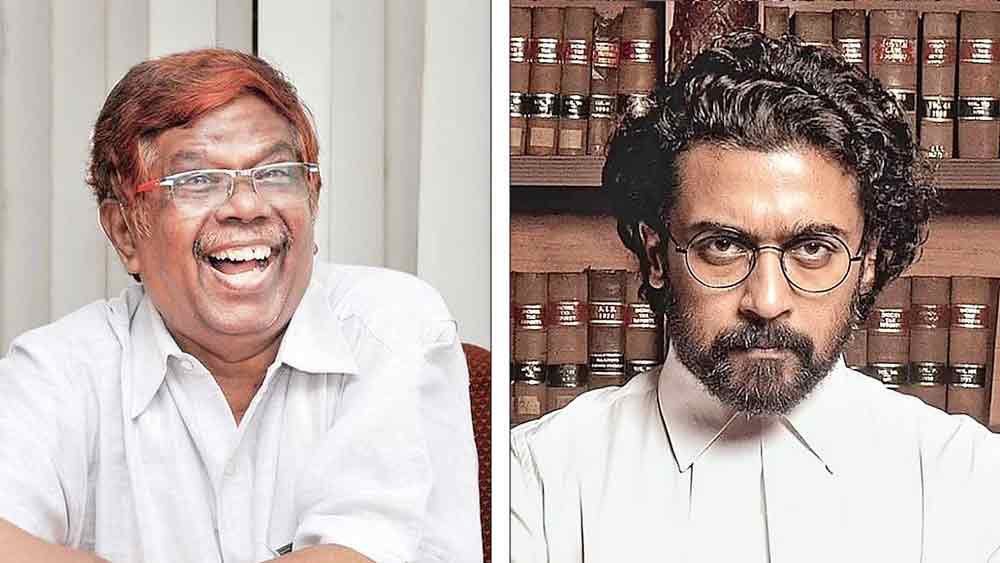Justice Chandru

“It is high time that a scientific caste census is taken to help the State formulate its future policies.”
Justice K. Chandru, an Indian advocate and former judge of Madras High Court, was a well-respected judge among the judiciary and. He practiced in the constitutional side of the Madras High Court and was made an Additional Judge of the High Court on July 31, 2006, and he retired on 8th March 2013.
Justice K. Chandru is known for his judgments that impacted the lives of many impoverished and downtrodden people. During his judicial career, Justice K. Chandru pronounced over 96,000 verdicts. He was known for fighting against caste discrimination and for the rights of all oppressed communities in Tami Nadu.
In an exclusive interview, Justice K Chandru shares with Marie Banu his inspiration to advocate for the neglected sections of our society.
From being a people’s lawyer to a People’s Judge, what was your inspiration to advocate for the neglected sections of our society?
I was working with the working class and their trade unions since my student days. Therefore, when I became a lawyer I wanted to join a law firm which works for the interest of the workers and the poor people. Thus, I joined M/s.Row & Reddy, a leading law firm that was started in the forties by two famous barristers including Mr.V.G.Row. I worked in that firm for seven years that mainly dealt with labour matters and also certain human rights issues. It was my Marxist ideology and working with trade unions that inspired me to work for them as a lawyer. When I became Judge, the same training and motivation continued even on the bench.
Known for taking pro-justice stances, can you share your experience with Justice Sathyadev and Justice Krishna Iyer?
As a law student, I knew about Justice Krishna Iyer. He was instrumental in starting a legal aid movement in Tamil Nadu and formed a Society called Tamil Nadu Legal Aid and Advice Board. It was first of its kind in India and did many wonderful works in rendering aid to poor and needy. As a lawyer, I was part of its panel and conducted many cases for the poor pro bono.
Justice Iyer was our motivating force. His tenure as a Supreme Court Judge saw many judgments which are pro-social justice and we were inspired by the same. His contribution to labour jurisprudence is immense and I have published a book exclusively dealing with Justice Krishna Iyer’s contribution to labour law. Initially as a labour lawyer, his judgments gave immense strength and binding legal precedents to argue in courts. Later, he was instrumental in my accepting the office of judgeship and was continuously monitoring our work with occasional notes of appreciation.
Justice Sathya Dev became a judge only in 1978, the time when I was a Junior lawyer. He took a lot of interest in me and our friendship grew over the years. He was known for his uprightness and integrity which was a great inspiration to me. He advised me: “You should accept judgeship. Being a Senior Lawyer earning money is not enough. You must render service to the society.”
When the Jai Bhim was filmed and the court hall set was created, I suggested to the Art Director that portraits of Justice Krishna Iyer and Justice Sathya Dev must adorn the walls of the court hall set which was complied with. That was my least contribution in perpetuating their memories.
What were the challenges you faced at the time of Parvati Case trial which is the story of Jai Bhim film?
The challenges I faced in handling the case of Parvati were manyfold. First of all, she did not have enough information about the fate of her husband Rajakannu. Thereafter, when we filed a habeas corpus petition, the Judges were initially reluctant to record evidence in that case. The whereabouts of the two nephews of Rajakannu (who were also kept in the lockup and tortured) were unknown. It took several efforts to locate them in a remote village in Kerala, bring them to the High Court to be examined as eye witnesses to the murder of Rajakannu that was committed by the police inside the lockup.
While the case was ongoing, the Sub-Inspector attempted to bribe and influence me to withdraw from the case. This led me to complain to the High Court about his misconduct. The High Court took a stern view and summoned the DGP. After a reprimand, the Sub-Inspector was suspended from service for improper conduct of approaching the other side counsel.
Similarly, a special Public Prosecutor was appointed by the Government to conduct the murder trial before the Sessions Court in South Arcot that was also challenged by the accused police. On my intervention, their writ petition was dismissed.
Mr. Venkatraman, an advocate from Chidambaram town who was appointed as a Special Public Prosecutor (SPP) also faced severe strain. His house was attacked by hooligans and his library, furniture and car were burnt, while the police was watching the other way. This made me to move a resolution in the High Court Advocates Association calling for police protection for the SPP. Finally, on my application, two gunmen were provided to guard them. I also filed a case for the loss of property and the High Court granted compensation to the lawyer.
Likewise, I had enough problems in pursuing the Parvati case. However, thanks to Justice P.S.Misra, the Senior Judge in the bench and who came from Patna and his stern approach resulted in not only compensation being awarded to the tribal woman and her nephews, but also a house plot given to her on directions from the Court. The accused policemen were convicted with life term imprisonment and their appeal in the High Court was also dismissed thus making them to undergo the full sentence in jail.
Do you think the Jai Bhim film will trigger the formation of policies or plans to benefit the neglected communities?
The Jai Bhim film drew the attention of the cine viewers and sensitized them about the plight of the tribals and the fact that they are being excluded from several government schemes. The Chief Minister of Tamil Nadu, who was invited for the Jai Bhim film preview, wrote a letter to the production company stating that the film will light a lamp in the lives of the Irulas and that everyone must emulate such actions. On the Diwali day, the Chief Minister also spent a day in a Kuravas colony in Poonjeri, Chennai. During that time, he ensured that the Revenue Officials were also present and attempted to sort out some of the long pending demands of the Kuravas. He also made the Chief Secretary to Government of Tamil Nadu send a circular to all District Collectors to provide details of the tribals living in their districts on a weekly basis with a view to sort out some of their fundamental problems like: roads, street lights, water and drainage facilities, provision of anganwadis, distance from schools and primary health centres.
I am sure that once the statistics are collected, certain development work will be undertaken by the government since the circular itself said that the Chief Minister was directly scanning all the work relating to the tribals in the State.
The practice of profiling de-notified tribes as criminals has been still allegedly passed on to young police officers. Your thoughts?
Even after the repeal of the Criminal Tribes Act, 1871 and they were listed as de-notified tribes, the mindset of the average policemen continues to look on them as criminals. Even today, the communal profiling of police records continues and more often the de-notified tribes are implicated in false cases. The Jai Bhim film also attempted to project these unlawful activities on the part of the police.
Caste being an indicator of Class, do you think we should insist on a caste census? (Article 15 and 16 talks about Social and Economically backward class.)
The Socially and Educationally Backward Classes (SEBCs) have to be identified by the State for the purpose of affirmative action. Though the word “class” alone is mentioned, the courts have interpreted that a caste can be an indicator for identifying an SEBC. Since new claims for inclusion in the SEBC list are coming from different quarters and some of the already included OBC communities are demanding exclusive quota in reservation for them, it is high time that a scientific caste census is taken to help the State formulate its future policies. Therefore, a caste census which was given up long ago must be renewed and a fresh census must be undertaken.
Your advice for today’s youth/ aspiring lawyers?
As Dr.Ambedkar said, “learn, educate and agitate” is the only advise that the youth must emulate and achieve.

